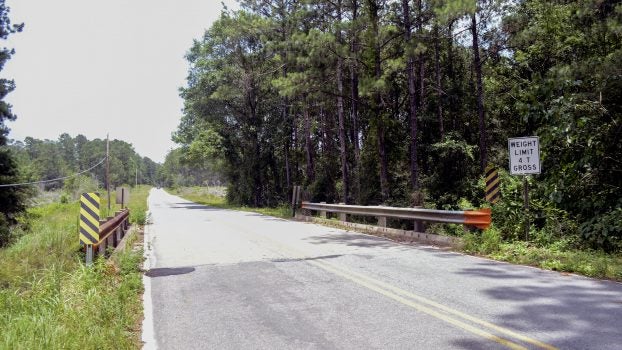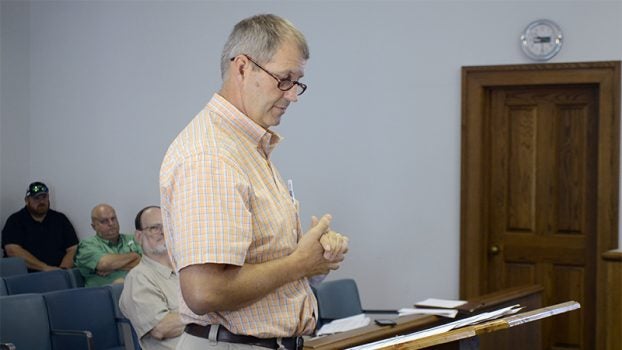State orders closure of McNeill Steephollow Road bridge
Published 7:00 am Tuesday, August 8, 2017
Just weeks after Pearl River County Engineer Les Dungan warned the Board of Supervisors that bridge closures could occur, the state sent a letter mandating the immediate closure of a bridge just east of Interstate on McNeill Steephollow Road. The news came during Monday’s meeting of the Pearl River County Board of Supervisors.
The state is currently in the process of inspecting all timber bridges through an independent agency. So far, two bridges in Pearl River County have been inspected, Dungan said.
The inspectors approved a bridge on Homer Ladner Road as safe for the posted weight limit, he said. However, the state did not agree with the posted 4-ton limit for a bridge located on McNeill Steephollow Road. Instead, inspectors said the timber pilings and bulkheads showed signs of advanced decay and ordered the bridge’s immediate closure.
Dungan said he anticipated some closures, and solicited emergency bids last week from four local contractors to repair the bridge so it can be declared safe for public use.
Monday, the Board voted to repair the bridge by installing temporary culverts made out of old railroad tanker cars. It awarded the project to the lowest and best bid from Holliday Construction, LLC at a cost of about $76,000, just below Dungan’s estimate of $80,000.
Dungan said he will notify the contractor that work can begin immediately to stage the area until the tanker cars arrive in about a week. The road will remain open until construction begins, despite the closure order from the state, he said.
“It’s just not reasonable to come down here and say ‘shut a road down today,’” Board Vice President Hudson Holliday said.
Construction is estimated to take up to four days, during which time the section of road will be closed and traffic will be detoured, Dungan said.
Despite being a top priority for state aid funding, he said the project will be paid for using local funds due to a lack of state and federal funds.
“It’s ironic that independent inspectors have been hired to come in and review some of our bridges that are in the worst condition, because the money that’s going to be used to pay those inspectors is the reason we’re not going to have any state money for repairs this year,” Dungan said.
Despite the setback, County Administrator Adrain Lumpkin said the silver lining of the county funding the project itself is that another site will move up the state aid priority list when funding becomes available again.
But, Pearl River County has 30 timber bridges still to be inspected in addition to the two previously mentioned, Dungan said.
“We have a problem with bridges; this report confirms that,” he said, presenting the Board with a list of all timber bridges and an estimated cost for repairs.
That same day, the Board awarded a contract to SCI, Inc. for $361,970 to replace a bridge on Otis Jones Road with culverts. That project will be funded by the state, Dungan said.
In addition, four other bridges on Dungan’s list are either being repaired or replaced.
Yet, the estimate to repair or replace all of the remaining timber bridges would cost the county about $4 million.
“Of these, some of them will be allowed to remain open, I’m confident of that, but I don’t know how many,” Dungan said.
In the past 21 years, he said $6 million in Local System Bridge Replacement and Rehabilitation Program funds was spent in Pearl River County to replace 32 bridges.
“We’re halfway there,” Dungan said. “But part of the problem is the bridges we’re looking at won’t last 21 years.”
This year, LSPB was not funded by the legislature, resulting in $247,000 less funding to Pearl River County, he said.
Since 1999, the county has spent $1 million in local money to rehab and replace 13 bridges and $10.6 million in state aid and federal funds have been used to rehab/replace 23 bridges, Dungan said.
Dungan advised the Board to have the remaining 32 bridges repaired or replaced by March 2019, which could be achieved by working on a 6-month contract cycle.
“’Who created this crisis?’ is a good question, but the crisis was coming sooner or later,” Dungan said.
The Board took no action on the matter.







